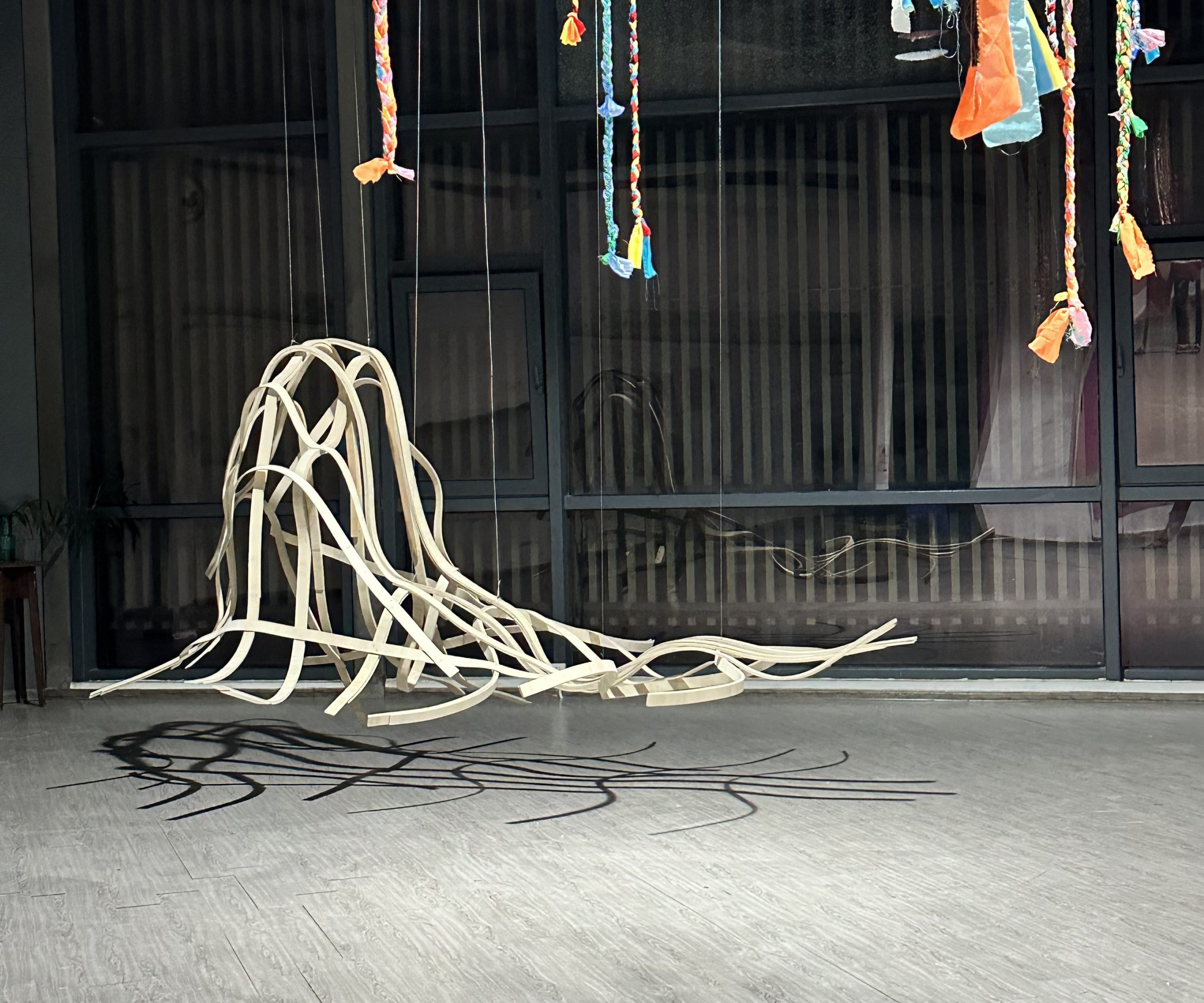Sculpture in flexible plywood made for Art in Social Space at The Nordic Contemporary Art Center in Xiamen, China. Photography by The Nordic Contemporary Art Center.
FLOATING SEABED I (2024)
Floating Seabed is made specifically for the exhibition Art in Social Space at the Nordic Contemporary Art Center in Xiamen, China.
The curving grid – or netting – is at the core of Karen Land Hansen’s investigation and sculpture. The piece is based on geological mappings of a bubble reef: a unique reef found at the seabed of Kattegat Sea, which is part of Denmark. The grid is Land Hansen’s abstract interpretation of the seabed and its curves, surfaces and formations. In art, the grid has traditionally been used as an ordering system pointing to some kind of rationality. In Karen Land Hansen’s sculptures, we find a lattice structure that is irregular, changing and imaginative.
The forms of the sculpture are based on cross-sections of the seabed close to the islands Hirsholmene in Kattegat. Here, the seabed is completely unique and characterized by highly varied landscapes and habitats: Bubble reefs and moraine sediments are both geological phenomena and home to many animals and plants. Marine geologists and geographers from GEUS (The National Survey of Denmark and Greenland) have used technologies such as multibeam echo-sounding to scan the seabed and map a large section of it. This work is conducted in order to contribute to the sustainable use and protection of the seabed. And GEUS has worked up some of these ocean data and made them available to Karen Land Hansen as part of mutual exchange and dialogue.
The artist has cut cross-sections of bubble reefs in cardboard, in order to make a mould on which she has fixed and shaped strips of flexible plywood. The motifs of the artworks serve both as concrete references and as more universal forms and metaphors. As the material is worked up, the motifs are transposed far away from the specific subject at hand. This creates new layers of significance and makes the works equivocal and ambiguous.
There is a huge contrast between the high-tech ocean data and the manual and simple processes in Land Hansen’s work. Behind this contrast, however, there are also common features. For both scientists and artists work with transpositions and interpretations of reality, in the attempt to make it comprehensible. Along with the scientists at GEUS, the artist wishes to raise awareness of the ocean and the seabed, and to emphasize the importance of safeguarding this sphere. In the context of this exhibition at NAC the artist points to both the specifics of the Danish seabed as well as the global, interconnected ocean bed.
We are indebted to: S. C. Van Fonden, The Danish Art Workshops, PMH Systems, By Ida Nissen, Tine Hecht-Pedersen, Paradis and GEUS.
Translation by Morten Visby


